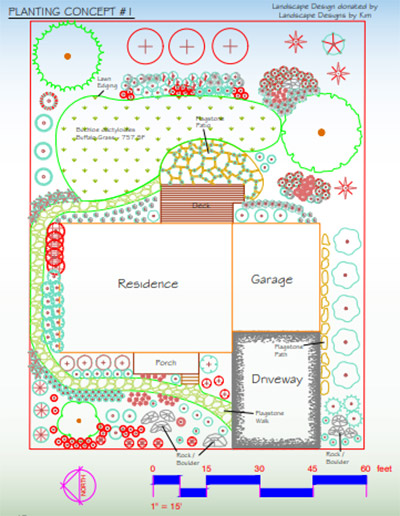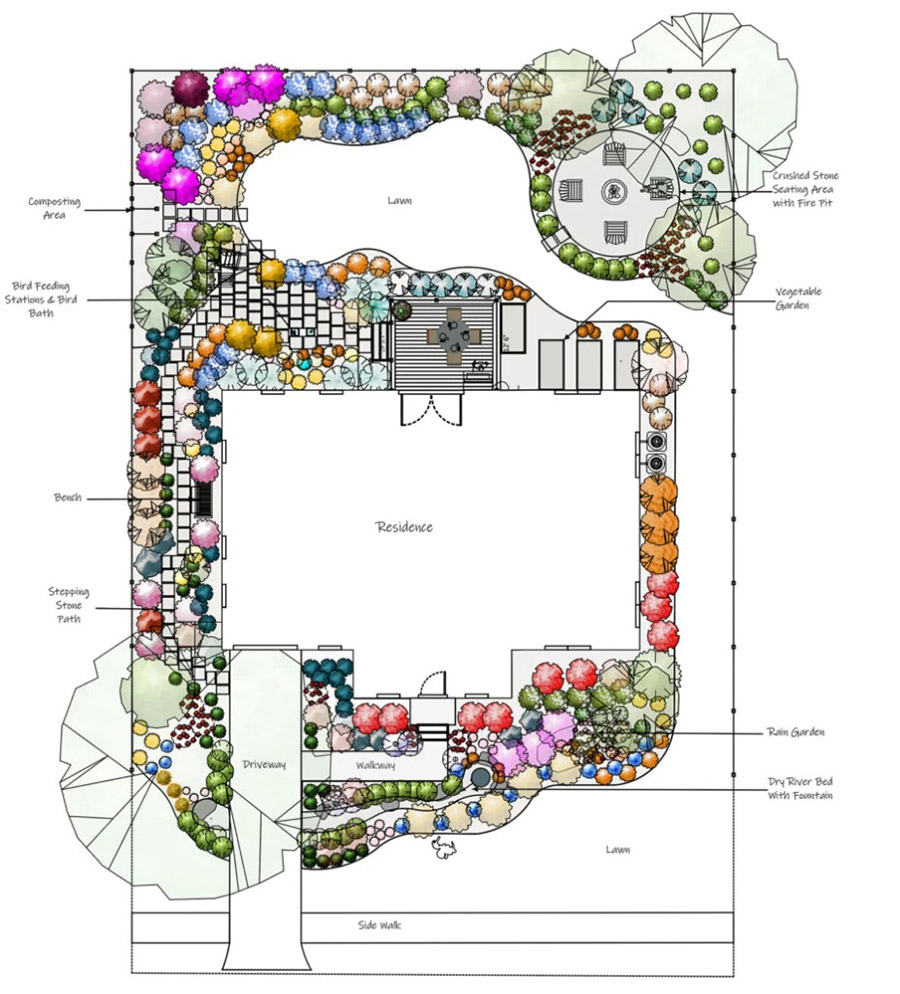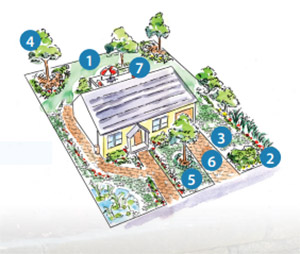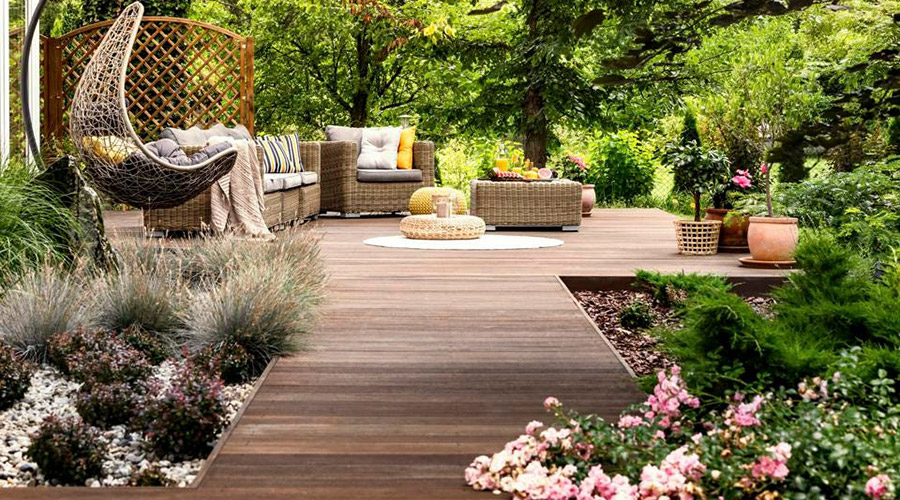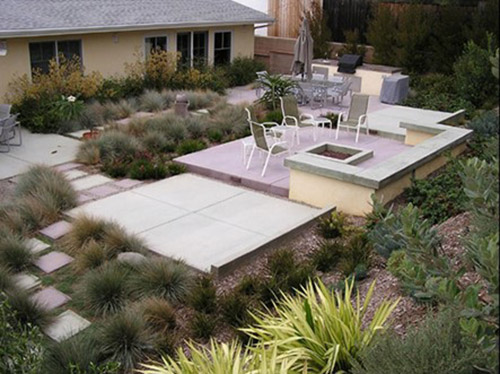Landscape Design Considerations
Whether you hire a Professional Landscape Designer or you plan to Do It Yourself, here are 8 things to consider in designing your landscape.
- What type of climate and microclimates need to be considered?
- What are your soil conditions?
- What existing plants and structures need to be moved, removed, or incorporated into the plan?
- Are there views you want to feature or block?
- Where is the available water?
- Are there rules or ordinances from an HOA, city, or state that limit your options?
- How will your theme compliment the lines and style of your home’s architecture?
- Do you prefer neat, geometric, or symmetrical shapes and structures?
- Do you prefer asymmetry with soft natural lines?
- Do you want to include only specific colors?
- How do you want to create unique areas in your yard such as lawn for playing games, patio or deck for entertaining guests, benches to sit and watch birds, raised beds for growing vegetables, wildflowers for promoting birds and pollinators, open spaces for wildlife access, or private spaces for meditation.
- Where can you include drought tolerant and native plants?
- How might you use permeable pavers, groundcovers, or mulch?
- Group plants according to their needs for water and sunlight.
- Does your plan include installing a sidewalk, driveway, wall, terrace, deck, or patio? Schedule this before adding plants that could be damaged in the process.
- Are you planting or moving trees? Do this in the early spring or late fall when the plants are dormant.
- Will the planting beds need soil amendments? Do this before planting.
- Are you adding raised beds? Depending on the depth of the raised bed you may want to add a weed barrier under the bed or mulch around the beds.
- Are you installing a new irrigation system or retrofitting an existing system? Visit Sprinkler Systems for more information.
- Install drip irrigation where possible to direct water to plants roots.
- Consider each plant’s growth rate, mature size, maintenance needs, and sun and water requirements before planting. Have you spaced the various plants with enough room to reach their full height, width, and depth? Will tall plants shade the shorter plants?
- How will weeds be minimized. Dense plantings can minimize weeds. Will you have time to do the weeding yourself or will you hire a professional? Will plants require pruning? How will they be protected during the winter months?
- Sketch Free
- Gardena’s My Garden
- Plan-A-Garden
- ISCAPE App (Only at the Apple App Store for use with iPhones or iPads)
- DreamPlan Home Design

